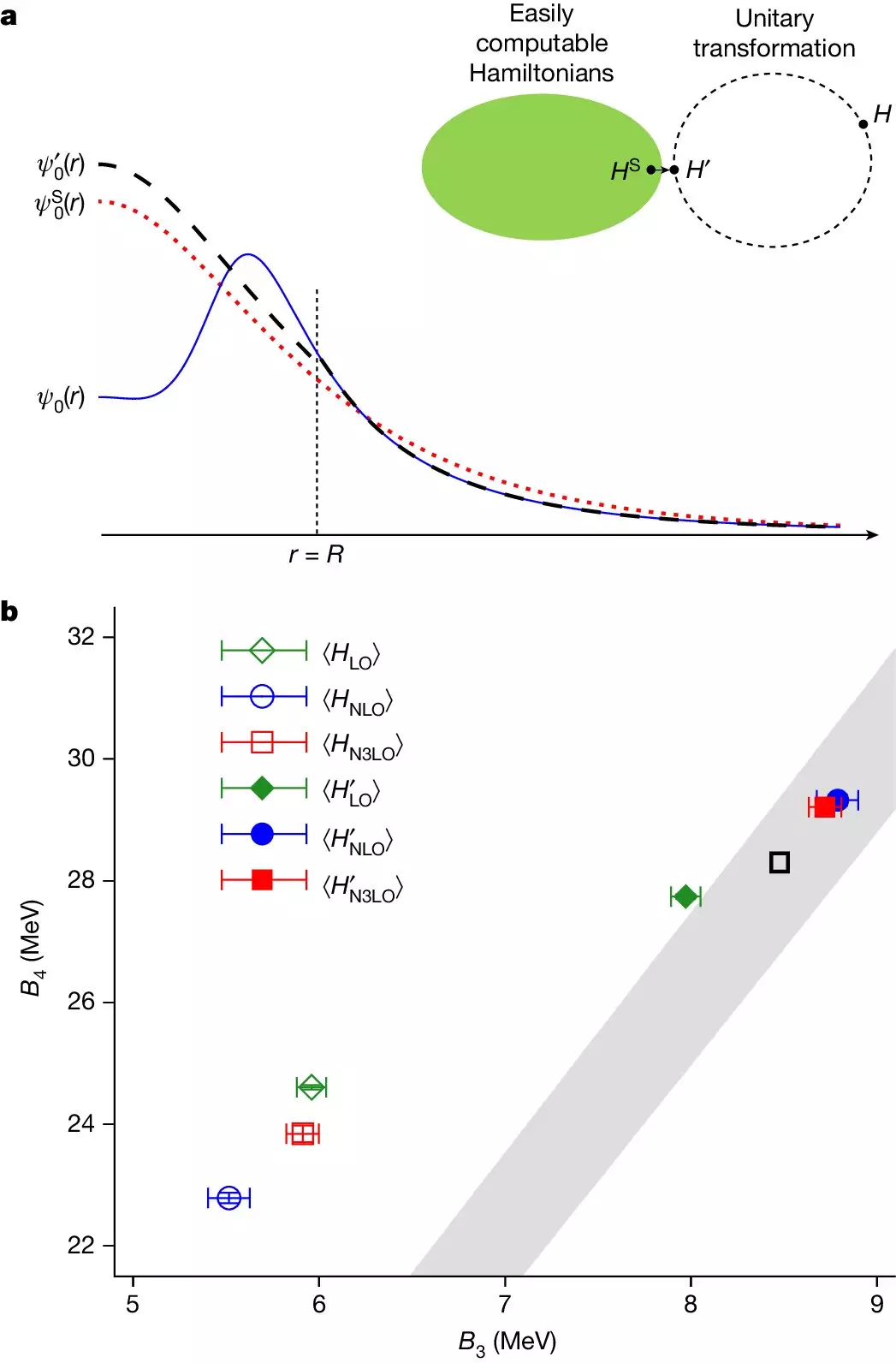In the realm of quantum physics and quantum chemistry, strongly interacting systems play a crucial role in understanding the behavior of particles at a microscopic level. These systems are often complex and challenging to study, requiring sophisticated methods for accurate analysis.
The Sign Problem in Monte Carlo Simulations
One of the commonly used methods for investigating such systems is through Monte Carlo simulations, which utilize stochastic processes to approximate quantum phenomena. However, these simulations encounter limitations when sign oscillations occur, leading to inaccuracies in the results.
Introducing Wavefunction Matching
To address this issue, an international team of researchers from various countries collaborated to develop a novel method called wavefunction matching. This innovative approach aims to overcome the sign problem by mapping intricate problems to simpler models that do not exhibit sign oscillations, facilitating more accurate calculations.
Application in Calculating Atomic Nuclei Properties
By employing wavefunction matching, the researchers were able to calculate the masses and radii of nuclei up to mass number 50 with remarkable precision. These calculations aligned closely with experimental measurements, showcasing the effectiveness of this new method in quantum many-body theory.
Ab initio methods, which start from the fundamental components of a system and their interactions, are pivotal in exploring complex quantum systems like atomic nuclei. These methods provide insights into the binding energies, properties, and structural characteristics of atomic nuclei, shedding light on the interactions between protons and neutrons.
Solving Computational Challenges with Wavefunction Matching
Despite the benefits of ab initio approaches, challenges arise when dealing with systems that possess intricate interactions. Quantum Monte Carlo simulations, a popular technique in nuclear physics, encounter difficulties due to the sign problem. Wavefunction matching offers a solution by simplifying the high-fidelity interactions, making calculations more manageable without sacrificing accuracy.
The implementation of wavefunction matching has opened up new possibilities in nuclear physics research, enabling precise calculations for light nuclei, medium-mass nuclei, neutron matter, and nuclear matter. By bridging the gap between theoretical models and experimental data, this method enhances our understanding of nuclear properties and phenomena.
Looking ahead, wavefunction matching holds promise in various fields beyond nuclear physics, including classical computing and quantum computing. Its versatility extends to predicting the properties of materials crucial for quantum computing, emphasizing its significance in advancing scientific endeavors.
The development of the wavefunction matching method represents a significant breakthrough in quantum physics, offering a solution to longstanding computational challenges in studying strongly interacting systems. As researchers continue to refine and expand upon this innovative approach, the potential for groundbreaking discoveries in the realm of quantum mechanics remains vast.



Leave a Reply